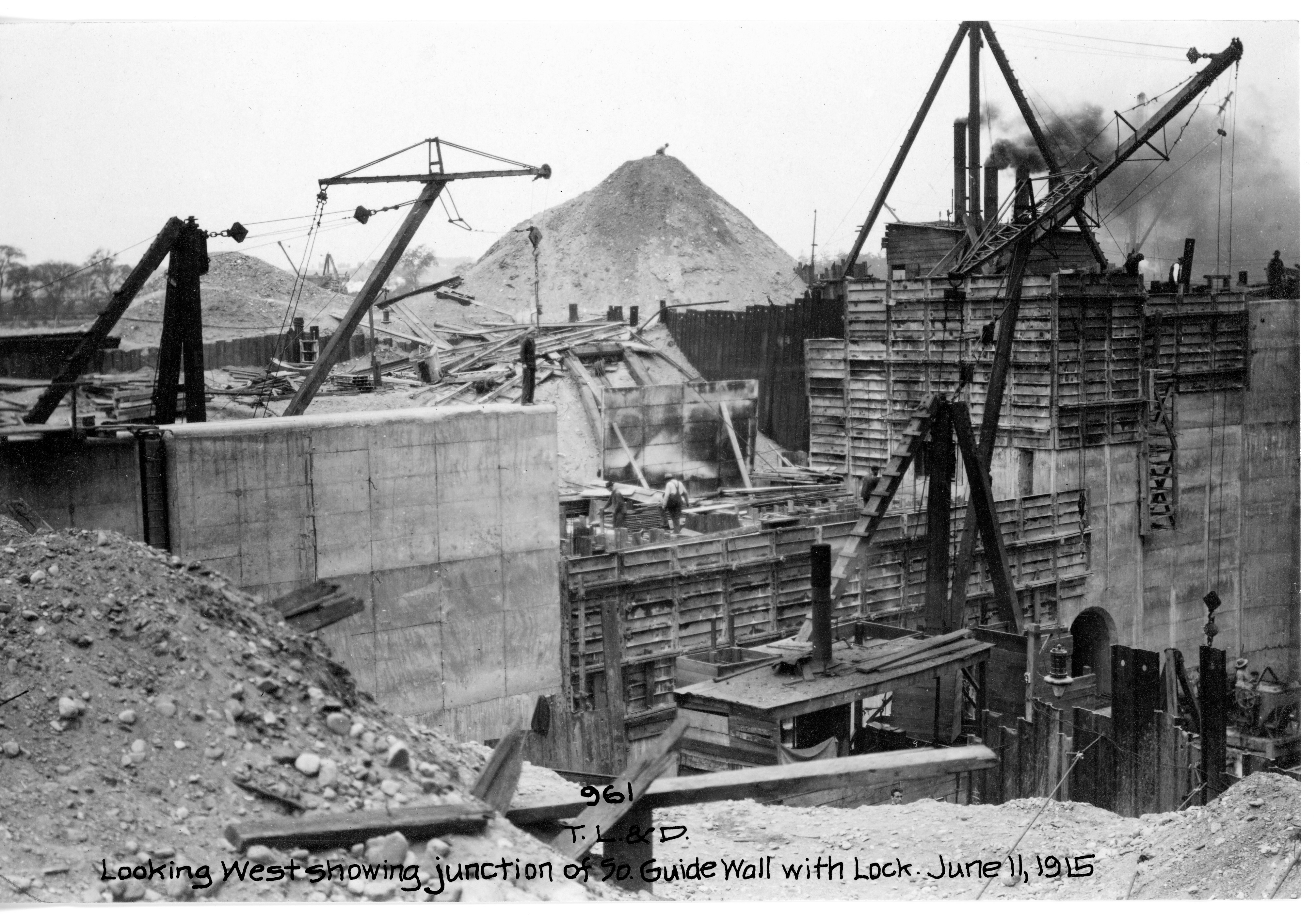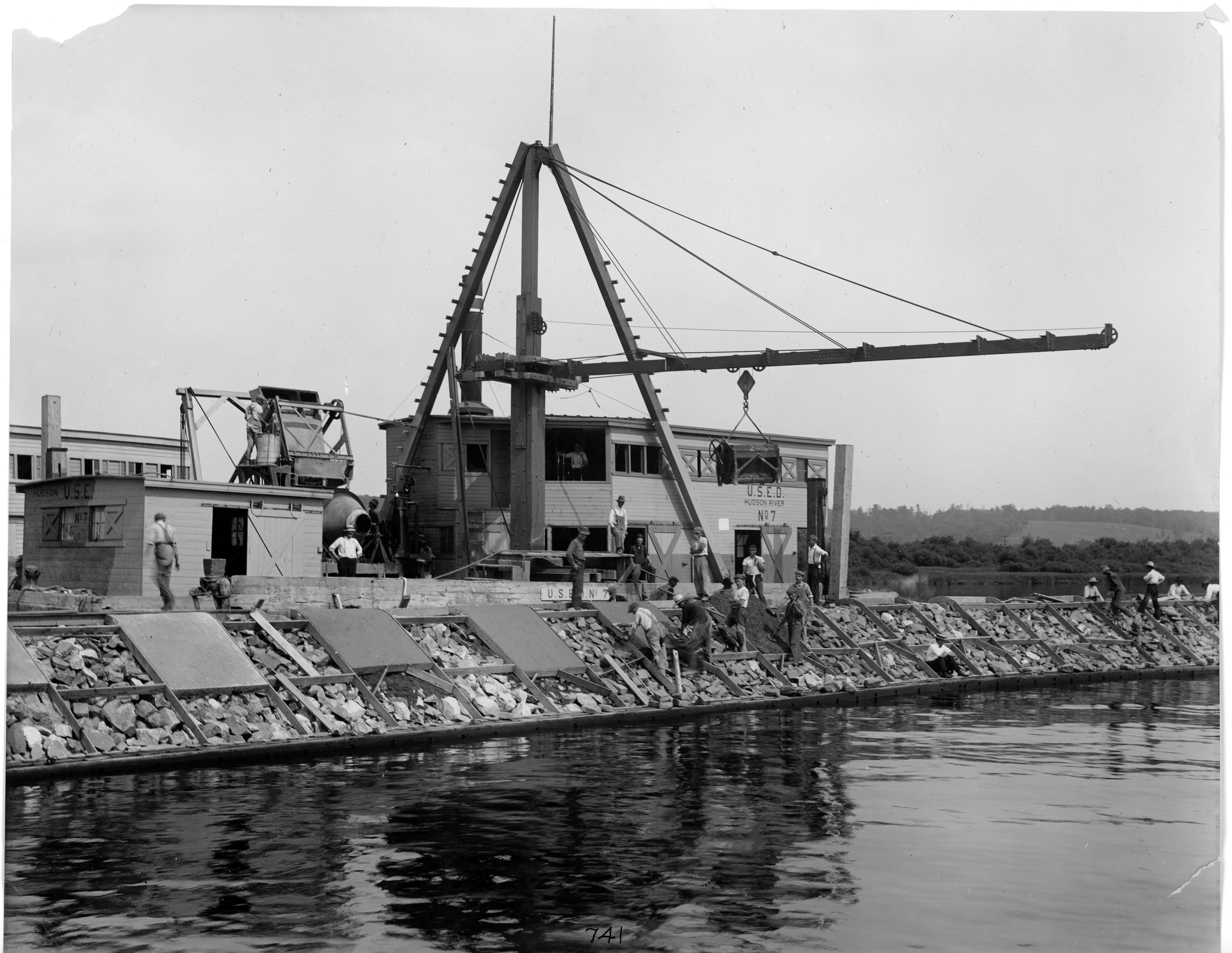| |
 |
| |
Burden Water Wheel, ca. 1900, shortly after being removed from service. Original photograph at Rensselaer Polytechnic Institute Library, Troy, New York.
Library of Congress |
Troy, New York, is a gem of an American city with an extraordinarily rich history. It helped launch the Industrial Revolution in the United States and once ranked among its wealthiest cities (per capita). It stands at the confluence of the Hudson River and the Erie Canal, the landmark engineering achievement that transformed New York City into the nation’s principal seaport and opened the interior of North America to settlement. In 1826, one year after completing the canal, the State of New York built a dam across the Hudson River at Troy and relied on waterpower for a number of productive manufacturing businesses, including a thriving steel industry.
In fact, the city was a major innovator in the production of steel in the U.S. with the first Bessemer converter built for the Burden Iron Works on the banks of Wynants Kill Creek. It once housed the most powerful vertical water wheel in history and produced all variety of steel and iron works, including horseshoes, stoves, fire hydrants, surveying equipment, and railroad spikes. The mill also forged steel rails for the Pennsylvania Railroad which, by 1882, was the largest corporation in the world. Additionally, the Hudson River produced the nation’s first two engineer schools—West Point (1802) and Rensselaer Polytechnic Institute (1825). The latter occupies prime real estate on the banks of the Hudson River in Troy. Popularly known as “RPI,” it granted the first civil engineering degrees in the United States and remains, 200 years later, one of the top engineer schools in the United States.
Between 1913 and 1915, the Army Corps of Engineers removed the old state dam and built a new federal dam with a lock channel about 1000 feet upstream from the original site. Known as both the “Federal Dam” and “Troy Lock & Dam,” it played an important role in promoting and facilitating river navigation. The Hudson River runs for 315 miles, primarily through eastern New York State, with headwaters in the Adirondack Mountains. The lower half of the river is a tidal estuary, and the Troy Lock & Dam marks the northernmost point where the flow of the river changes direction with the tides. Congress authorized construction of the Federal Dam to improve navigation between the Hudson River and the New York State Canal System that includes the Erie and Champlain Canals. It was a major undertaking, and the Army engineers relied on contract laborers, many of whom came to Troy after completing work on the Panama Canal and bringing with them valuable experience.
 |
|
 |
|
 |
Troy Lock & Dam Construction, June 11, 1915, looking west
showing junction of south guide wall. |
|
Diver at lock gate, ca. 1915. |
|
Boat No. 7 of the USED Hudson River office at
Troy Lock & Dam, ca. 1915. |
| |
|
|
|
|
In 1920, Congress established a Federal Power Commission “to provide for the improvement of navigation [and] the development of water power.” Ford Motor Company moved the following year to secure authority from Congress for a powerhouse at Troy to generate electricity. It was the first time in American history that Congress authorized the use of a federal dam for private development of hydropower, but it would not be the last.
 |
|
 |
Troy Lock & Dam construction workers, ca. 1915, posed in front of a
“No Loafing” and “No Profanity” sign. |
|
Workers pouring concrete at Troy dam, ca. 1915. |
| |
|
|
 |
| A panoramic view of Troy Lock and Dam with associated and neighboring buildings nearby, no date. |
| |
The Troy Lock & Dam has operated for 110 years and enjoys a rich history of its own. In the summer of 2024, Michael T. Wright, a native son of Troy, New York, and chief of the Albany Field Office, New York District, reached out to the USACE Office of History. He relayed that many generations of dedicated staff—including, most recently, Daniel Garvansites—have maintained and preserved a rich collection of historic materials dating back to the period of dam construction. These include photographs in various formats, such as 8x10 glass-plate negatives, traditional film negatives, and high-quality prints bound in a series of albums numbered one through twenty. Several of those albums have been lost over the last century, but most have survived in very good condition. The images represent some of the finest photography ever taken along that stretch of the Hudson River in the period between 1913 and 1921 and include photographs of the old State Dam and construction of the new Troy Lock and Dam. The collection also includes an early-twentieth-century carpenter’s oak tool chest filled with, among other things, a wooden mallet, a planer, and several handsaws marked USED (U.S. Engineer Department), a term that began to go out of fashion in the 1930s. All of these items are currently being processed for accession into the USACE Office of History research and archival collections. Tremendous credit goes to the staff of the Troy Lock & Dam—especially Michael Wright and Dan Garvansites—for their outreach to the Office of History to assure the proper long-term preservation of these remarkable historic artifacts.
.jpg?ver=cJv_-v4Z_MXwY_ylf5e1Ww%3d%3d) |
|
_1.jpg?ver=P8lXj89x7Key4UQ7XmGPYw%3d%3d) |
|
.jpg?ver=en3vKR9BKeOMhxCs_nRtSw%3d%3d) |
Handmade wooden box of large 8” x 10” plate glass negatives
from around 1915. |
|
Large black photo album no. 19, Troy Lock & Dam Construction photos, including photo of tugboat Col. M. J. McDonough, Feb. 2, 1923. |
|
Tools in oak carpenter’s trunk used in
Troy Lock & Dam construction, ca. 1900. |
.jpg?ver=m-U3vQ7lFeRWeaVZTNNSIA%3d%3d) |
|
.jpg?ver=c3MApIxVi9ZYVsEiPr3P-A%3d%3d) |
|
.jpg?ver=_nByzZ6WS_xGJYbr3dkktg%3d%3d) |
| |
|
|
|
|
Except where noted, all photos are from Office of History, New York District Series, materials donated by staff at Troy Lock and Dam
***
October 2024. No. 166.